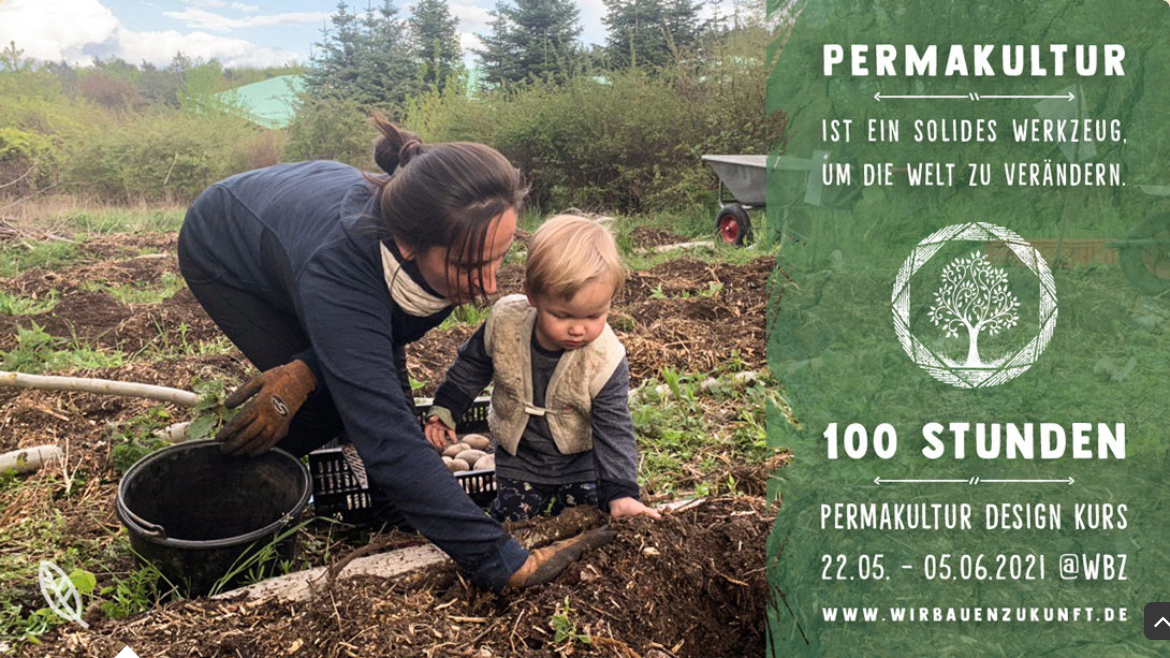
——————
- “Dirty system” – vermiculture system
- “Lush Jungle” – hydroponic system
- “Waterfall” – hydroponic system
We want to build Vertical gardens in the Baumhaus space, to bring nature, ideas about urban permaculture and caring for plants into the space. It’s also a cooperation with our local community garden Himmelbeet – we’ll grow their seedlings in the spring time.
A vertical garden is crawling up the walls of our inverted tree house. Following the principles of permaculture, we aim to bring nature inside, because we feel that maintaining nature also means taking care of ourselves. As space and time is often limited in urban environments, we are developing self-watering and self-composting plant systems that can flourish up our available vertical surface areas. Over the last months, several helpers from all kinds of fields, be it engineering, architecture, geology, arts and culture, or even the curious next door neighbor, have come together to elaborate different vertical gardening systems. Equipped with yardsticks, notepads and tools, they have worked on a soil, a soil-free hydroponic and an aquaponic system with fish. We’re also planning a plant breeding station and other projects in co-operation with the community urban garden project
“Himmelbeet” which is just around our corner. These ideas are the seedlings of an ongoing process which volunteers have followed from the beginning until now. It’s a project that brings together people and encourages them to share their skills and experiences. But most important, this vertical garden is not just restricted to our walls, it can inspire others to invite nature into their own living rooms or kitchens. Therefore we want to offer workshops, where people can learn about permaculture, building their own vertical garden, or even making delicious food with herbs from their own little garden.
Vertical Garden Updates 28-06-2016
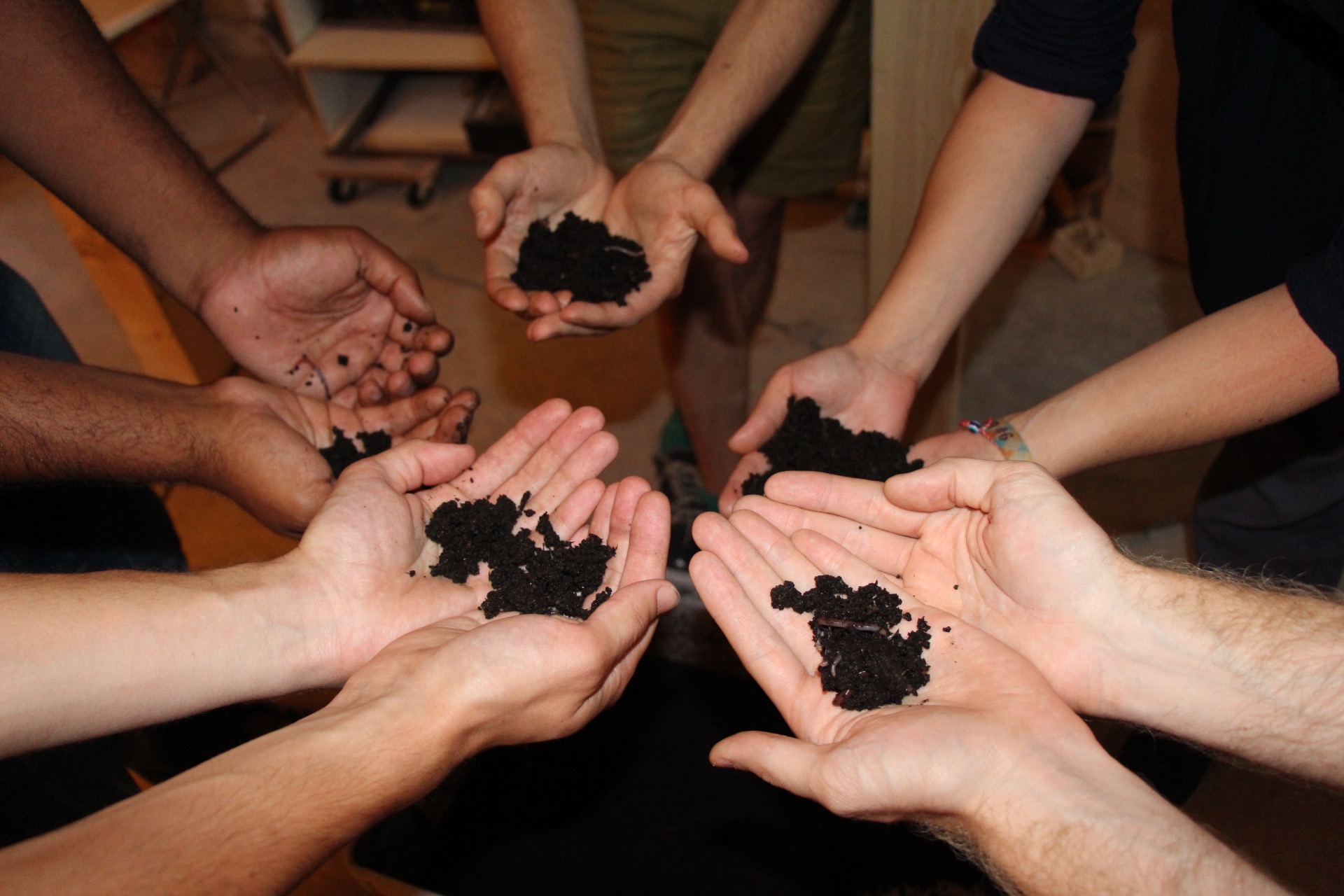
On Tuesday, June 28th we had an open meeting in our treehouse to work on two of our vertical gardening systems. One of them is the hydroponic “Lush Jungle” system where plants will cover a large surface on the wall. The other one is the “vermiculture system”, a compost system with worms.
In the last few weeks, Miriam and Tim, both Urban Garden and Free Space Management students at local Beuth University, calculated which plants work well for the big hydroponic system. Anna looked up pictures online and cut them out so we could place them next to each other to design the garden. But there were more suggestions for plants delivered this evening. The two experts explained why the system had to be homogenous and simple and why flowering plants are a bad idea. Eventually, we will select five final plants which we will cut out on the computer so we can design the garden. The whole system should be ready by the end of August/beginning of September. In a next step we also have to think about setting up the watering system in the cellar.
The vermiculture group was very blessed to have Hany Elkhodary, Co-founder of Würmer Hof, come all the way from Frankfurt Oder to meet and help out with the worm compost system. He had some valuable insights for us: Give the worms some leaves to balance the carbon/nitrogen levels. Separate the soil from the worms by holding a light over the soil, then scrape away the first layer and so on. We should also cut the kitchen scraps into pieces. Worms won’t travel from one box to another, we should just duplicate the same system in the other box.
Next up: Get the worm gang together, harvest some fresh compost, find a way to chop the kitchen waste in a WG-friendly way.

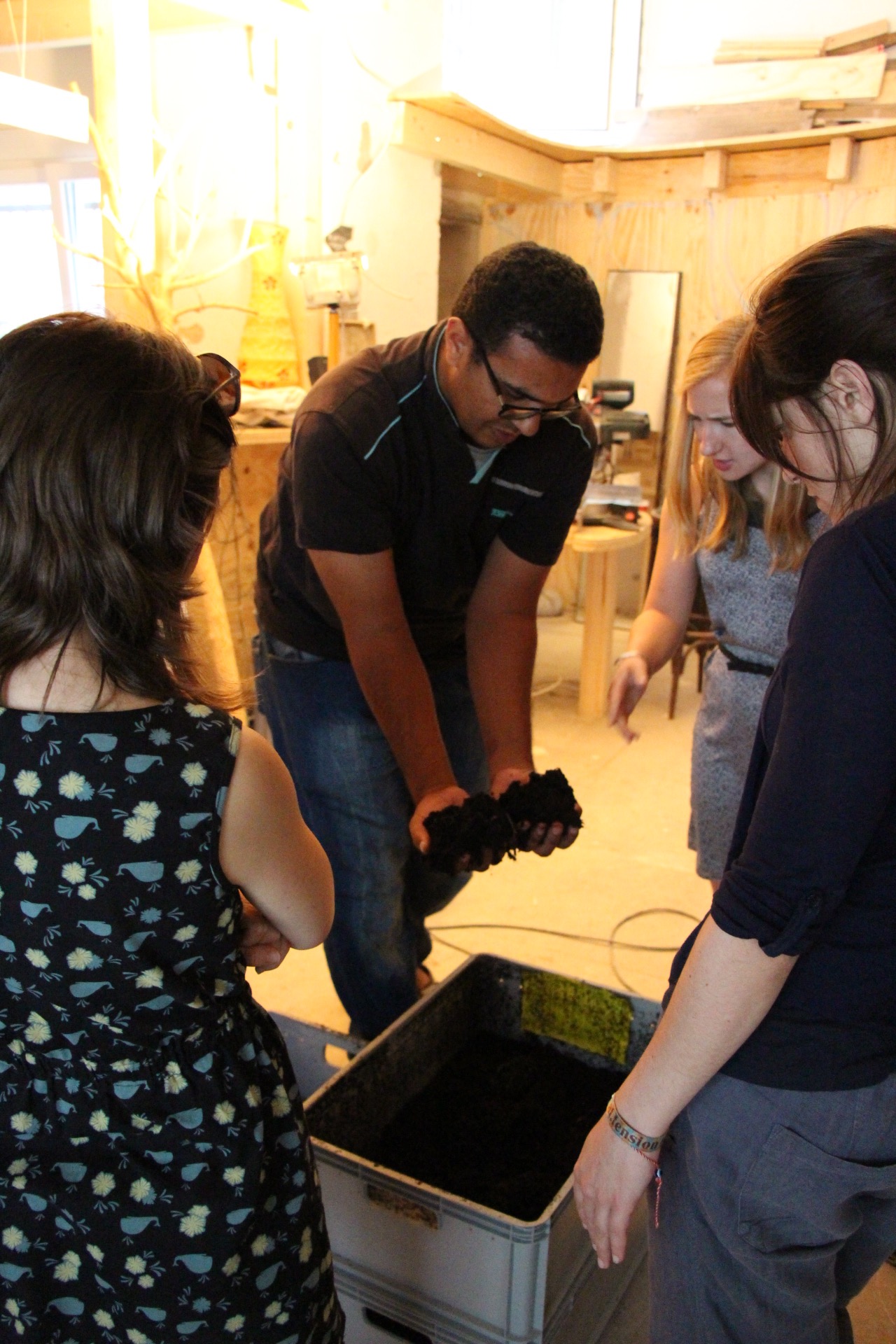
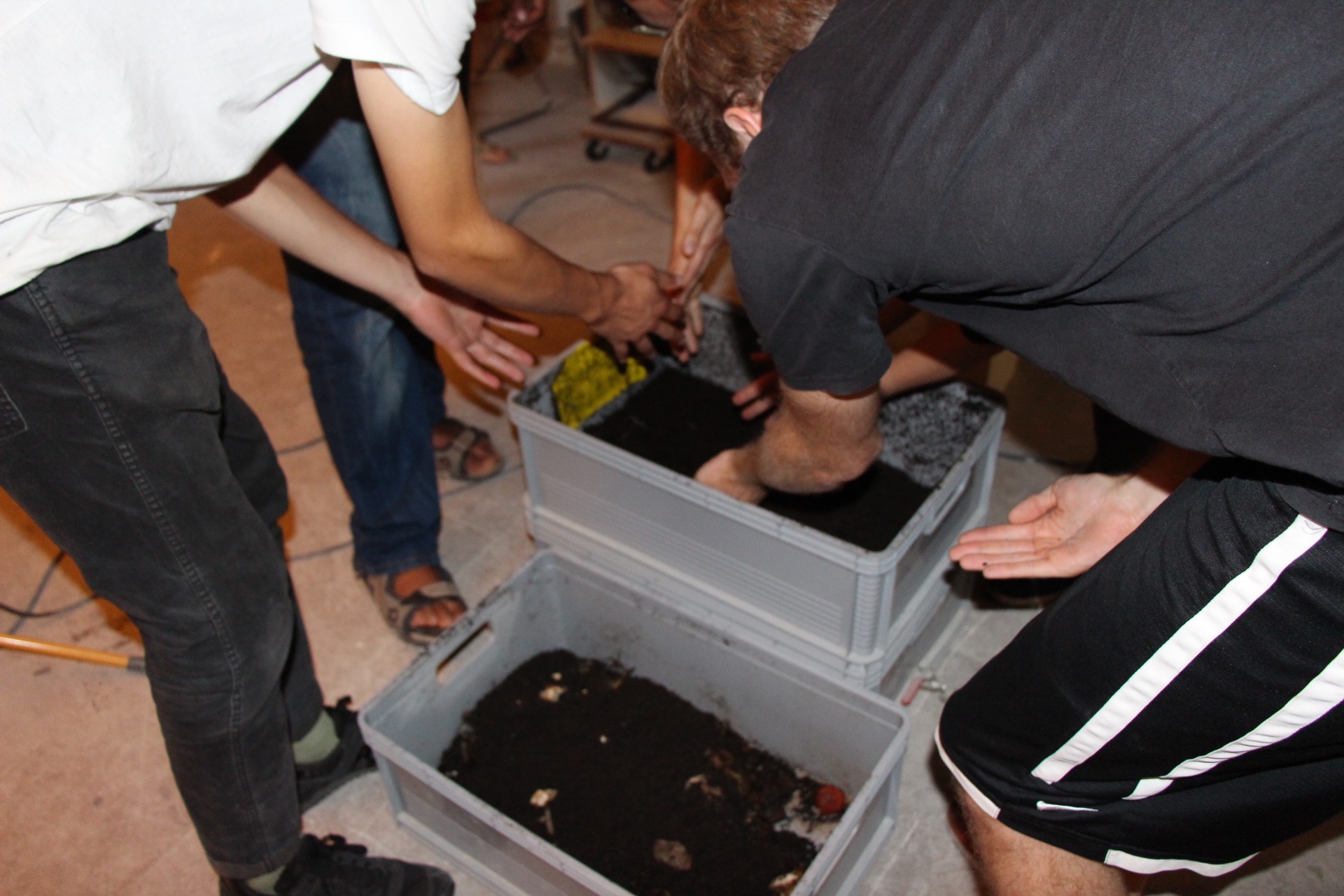
Vertical Garden
Updates 27-04-2016
At our sixth meeting we divided the helpers into three groups: A vermiculture group, a lush jungle group and a group which was supposed to think of a plant system for the empty space at the window, opposite to the waterfall plant system. The vermiculture group freed the cocoons and the baby worms from the cardboard box and put them into the plastic box with the soil and the worm food. Then, we moistened the soil. We drilled holes into the second plastic box so the worms can crawl up to reach more food scraps once they are big. But until then, it’s still a long wormy way. We expect them to be big in a few weeks time. Now we have to water the soil daily. Lou from “Fresh Square” (www.fresh-square.com) could give us some very useful tips.
Then, the Lush Jungle group decided that everyone should bring pictures of plants which would fit well into the Baumhaus. Miriam and Timothy from the Fachhochschule Beuth are currently measuring the humidity and light in the room and can check if the chosen plants would actually survive in the environment. The third group made first sketches for the empty space at the window. They want to create a soil system with plants that grow up a grid.
Vertical Garden Updates 13-03-2016
“Waterfall” VerticalGarden
It has been roughly one month since the waterfall vertical garden prototype was installed and we are now in a phase of observation and adjustment. One problem we noticed was that mold started to grow on some of the wooden plant frames and was spreading to the burlap sack material. As a solution we went through and sprayed the frames and troughs with vinegar. We then removed the plants and transplanted them into plastic containers and painted the sides of the troughs with a sealant. We are now seeing if the plants grow well in the plastic containers. One concern we have is that the holes in the new containers won’t absorb as much of the water, providing less water to the plants. The advantage of the burlap sack material was that it was able to wick up water through capillary action. The new plastic containers have a lot of holes where water can get through, but the holes are too large to illicit capillary action.
Other than that, the success and growth of individual plants in the system seems to be highly variable and dependent on the type of plant. The plants that seem to be doing really well in the system are those with waxy leaves that need less water. Right now we are thinking of ways that we can vary conditions within the system in order to provide optimal growing conditions for individual plants. For example, is there a way that we can provide more water to plants that need it without overwatering plants that do better with less water? Our plan is to continue tweaking the prototype and see what is successful.
Soil (Earth) Vertical Garden and Vermiculture System
After productive meetings and much debate we decided that, rather than creating an integrated vermiculture vertical garden system, it would be easier to create a vermiculture system and a soil vertical garden system separately from one another. This way we will also have fewer restrictions when designing the soil vertical garden.
This past week the soil group got together to design and assemble the vermiculture system. This is a composting system that utilizes worms to break down food scraps into nutrient rich mulch. This system will eventually be a source of soil for the soil-based ‘Earth’ vertical garden and a nutrient rich compost tea for the hydroponic systems. The use of this kind of mulch has been shown to not only promote growth in plants but also inhibit plant pathogens.
The next meeting will be at the Baumhaus on Sunday, April 20 from 17:00 – 20:00
Our vermiculture system design consists of boxes that rest or nestle on top of one another. Starter soil, bedding, food scraps and worms are added to the top box. Over time the worms break down the bedding and the food scraps. As the scraps are broken down they transform into a nutrient rich soil and a portion of the soil falls through to the box below. Worms also have access to this box, where broken down food scraps and soil collect. Moisture from the food drops all the way down to a bottom box. A nozzle in this box allows for easy access to the compost extract.
To put together the system we got three plastic boxes that rested nicely on top of one another and a nozzle. We cut a hole in the bottom box that was slightly smaller than the circumference of the nozzle. Then we screwed the nozzle into the hole and fit it with rubber and steel washers to prevent leaking. Afterwards we drilled holes into the bases of the top two boxes. We designed it so that the holes in the top box were larger in diameter. This way the worms will easily be able to access the middle box. The holes we added to the bottom of the middle box were smaller to prevent the worms from passing through to where the compost tea will collect. We may decide to alter the size of these holes so that it works with a rotating box system. This would mean that every so often the top and middle boxes would switch places, so the holes would need to be the same size on both boxes. We would then want to find a way to prevent worms and too much soil from falling into the tea. We also added a row of holes onto the sides of the top and middle box to encourage air exchange.
Our next step is to add the bedding, starter soil, worms and food scraps to the system and to see whether our design works the way we are expecting it to. This design employs the permaculture design principles “produce no waste” and “catch and store energy”. If you think of the Baumhaus as an ecosystem, food scraps will be created in the kitchen, transferred to the vermiculture system and then these nutrients will be utilized by the vertical gardens as a source of nutrients. Instead of the scraps leaving the ‘ecosystem’ and the Baumhaus having to buy fertilizer at a gardening store, nutrients will remain within and benefit the system. The soil group is also hoping to come to a consensus on the design of the soil vertical garden prototype soon and then start putting it together..
Vertical Garden Update 29-02-2016
At our fifth meeting, we continued evaluating and developing on all prototypes. Our 6th meeting will be on Sunday 20th March from 17:00 – 20:00 in the Baumhaus. The aim is for each team to present their prototype to the rest of the group at this next meeting. So, over the next couple of weeks, all teams will be gathering building materials and organising work sessions to continue building their prototypes.
28-02-2016 – Vertical Garden and Permaculture Planning Meeting #5
Our fifth meeting was lively and productive! On this lovely Sunday afternoon, the sun shone in through the vast windows of the Baumhaus space, catalysing inspired ideas and friendly conversation.
At this meeting we heard updates from all teams on the progression of their prototypes. The rest of the group offered constructive feedback on how each could be improved upon further. In group work sessions, each team used the opportunity to plan the next steps in the development of their prototype, whether this be evaluating and refining their plan, ordering materials or organising a time to come by the space and build!
During the Meet and Greet at the start of the session we welcomed back many, who were by now veterans of our Vertical Garden project, and also introduced a few fresh faces to the group. Together, we then reviewed and evaluated how the ‘Waterfall’ hydroponic prototype, built 3 weeks ago, was running. Factors to consider were the durability of the burlap sack material as the plant pouches and whether the plants were receiving a sufficient supply of water. We also addressed some mould that started developing on a few plants.
Next, each team split into their working groups to evolve and build upon their own prototypes. At the end of the meeting, the results of these dynamic work sessions were shared with the rest of the group:
The ‘Lush Jungle’ hydroponic system had spent the meeting acquiring measurements of the wall on which they would install their 4m² living wall. They researched online and sourced the materials they needed to build a prototype measuring 1x4m over the next few weeks. They have also scheduled a meeting for next week to start building!
Next up for the ‘Tiny Aquaponics’ team, was to enlarge their already functioning prototype. In this meeting, they planned to obtain a larger fish tank and cut a hole in the glass cover to hold a hydroponic plant pot (plant with no soil). They will be experimenting to find the optimum plants for their shrimp system. This system will eventually be installed as a long narrow tank in one of the front windows of the space.
The last team continued to develop an exciting plan for how to build the most efficient soil system. They have decided to prototype a ‘Modular Rotational Vermiculture’ system. The basic principle is that worms are incorporated into a system of soil-filled boxes piled on top of each other. These worms break down kitchen waste into a useable and highly nutritious mulch-tea. This could then be used as a natural fertiliser for other vertical gardens in the space.
Vertical Garden update 15-02-2016
At our fourth meeting we continued developing prototypes. We also evaluated and improved upon two functional prototypes. Our 5th meeting will be on Sunday Feb 28 from 14:00 – 17:00 in the Baumhaus – bring food and snacks to share. We will continue evaluating and building on all prototypes. Team members will need to keep in touch with their groups, coordinate ordering materials with us (baumhaus.berlin@gmail.com) and prepare a building plan. If you would like to book a work session in the space to work on building your prototype, just get in touch with us to arrange a time.
11-02-2016 – Vertical Garden and Permaculture Planning Meeting #4
At this fourth meeting we focussed on prototype development and improvement; it was a well-paced, fun and effective meeting. About 25 people showed up and brought along plenty of knowledge and a collaborative spirit. We evaluated prototypes for the ‘Waterfall’ hydroponics concept and the ‘Tiny Aquaponics’ system.
The evening started off with a chilled meet-and-greet, giving us a chance to get a good look at these two prototypes in advance of presentations on these systems. We heard presentations from the ‘Modular Compost’ soil system and the ‘Lush Jungle’ hydroponic system later in the meeting. Each group considered the next steps in the evolution of their system. Before the meeting ended, each group reported on their next steps to continue their prototyping process, as we sipped delicious cocktails made by the one and only Sarah from The Wedding Space.
Now for a more in-depth review of each system:
The ‘Waterfall’ hydroponic system had been built over the past few days and was now mounted on one of the front walls of the space. This is a closed system, composed of a wooden water tank and 3 wooden plant troughs. The troughs are lined with pond liner to allow water to flow though and burlap plant pouches filled with Seramis are installed in each trough. A pump sends water to the top trough, which then flows gently back down through the system. The team explained how they built the prototype and assessed how sustainable it was, as seen in the photo below.The total material costs for this prototype were 200€. This included all the materials used to make the plant troughs, tank, controller and pump.
The rest of the group offered plenty of useful suggestions for improvement, such as more ecologically friendly materials and solar panels to power the system. In the next weeks, this group will be experimenting with light and watering conditions and monitoring the growth of the plants.
The ‘Tiny Aquaponics’ prototype combines shrimps with the roots of plants in a fish tank in a mutually beneficial relationship; shrimp poop provides nutrients for the plant, whilst the plant filters the water to maintain a suitable habitat for the shrimps. In the feedback session, the group suggested a few suitable pumps for this prototype (ram pump and tesla pump). Next, this group will be enlarging their prototype and experimenting on a bigger scale!
In our second hydroponics system, the ‘Lush Jungle’, garden plants are placed in fabric pockets stapled to a waterproof wall to create a full, flat living wall. They are watered from drippers from four different heights so that plants get enough water without constantly soaking the wall. The group talked us through developments in their plans to build a 4x4m living wall. They had found a more durable alternative to rockwool, to root the plants into the system. We considered additional lighting systems to supplement natural light at the walls furthest from the windows. Another suggestion was that they source plants that would otherwise be thrown away from plant nurseries. Next up for this team, they will be drawing up a list of materials to order and building their prototype.
The last system to prototype is a ‘Modular Compost’ soil system, a vertical tower garden complete with a vermicomposting system (compost with worms and old food). The prototype will be made up of box shaped containers which will allow the plants roots ample room. Group feedback included suggestions for alternate natural fertilisers, such as mushrooms and a similar composting system with ants. Now, the team will work out the dimensions of their unit and how to use the space available in the most efficient way. They will be choosing plants and prototyping over the next few weeks.
Vertical Garden update 25-01-2016
At our third planning meeting we decided on 3 systems to start prototyping; soil, hydroponic and aquaponic. Our 4th meeting will be on Feb 11 from 19:00 until 21:30 in the Baumhaus. We will begin the process of prototyping so we are asking team members and people who are interested in joining to do some research and start to identify materials and resources we will still need (with prices and places where we purchase them or get sponsored for cheap or free). This meeting will be a continuation of the prototyping process. As teams develop their plans we will begin purchasing materials.
20-01-2016 – Vertical Garden and Permaculture Planning Meeting #3
The night outside was frosty but inside the cosy Baumhaus space the air was warmly buzzing with good energy, groovy people and great ideas…
We were continuing to plan the vertical and permaculture gardens to grow on the walls of Das Baumhaus. After two productive planning meetings, we now had plenty of ideas for everything from watering systems to aesthetic design. This third meeting was all about moving forward; we set a goal to work out which systems we wanted to prototype in the coming weeks.
The options were vast. So we split into working groups, each to explore a different support system for vertical gardening: the soil system, the hydroponics system (water only) and the aquaponics system (water and aquatic animals). With people coming from a variety of disciplines and interest areas, each offering their own valuable input, it made for some very interesting discussion. Between us all, we had a lot of experience of permaculture, building vertical gardens and working with aquaponics! We considered how, and the materials needed, to build each system, as well as how sustainable and price efficient they each were, and sketched out some designs.
The team working on soil systems came up with some very innovative ideas, including stringing up plant beds in hammocks and a vertical tower garden that also functions as a vermicomposting system (scraps from the kitchen with added worms create a great organic fertiliser and soil amendment!). Benefits of a soil system are that it would be 100% organic, would support principles of permaculture in that species within the ecosystem benefit each other and would be truly sustainable – waste products can be recycled as nutrients for other plants in the Baumhaus.
The hydroponics group planned to build a living wall, complete with tank, multiple dripping watering lines, wooden frame and a rockwool rooting for the plants, covering a 4x4m wall in the space. This system is water-efficient (and it waters itself automatically) and has the potential to be very aesthetically pleasing, giving us the chance to play with different coloured and textured plants. On the other hand, it would take a while to get this system going as the plants are installed and then must be allowed to grow into the wall.
The aquaponics system works on the basis that aquatic animals, in this case fish, and hydroponics exist side by side, in a mutually beneficial relationship. The fish faeces in the water used to irrigate plants provides them with essential nutrients. The plants filter the water, in turn, and thus maintain a suitable habitat for the fish. One aquaponics group focused on the idea of plants having access to water both above and below the water of the fish tank. The other group designed a ‘Paternoster’ style system. Plant baskets are hung along a vertical, circular conveyer belt, which turns a bit more each hour (or any given time interval) to allow each plant basket to be watered. Whilst the circuit is stationary, the basket at the watering station is allowed to flood, then drain out at a slower rate than it was watered. This ensures nutrients within the water are evenly distributed. A benefit of this system is that plants demanding different mixes of nutrients can be separated by basket and watered accordingly. When plants need tending to or harvesting, there is also no need to climb up to the baskets. This system has the convenience of being able to alter the heights of plant baskets as desired.
After all these ideas were presented to the rest of the group, we hung out, chatting, networking and drinking delicious cocktails mixed at our bar prototype by the lovely Sarah from ‘The Wedding Space’.


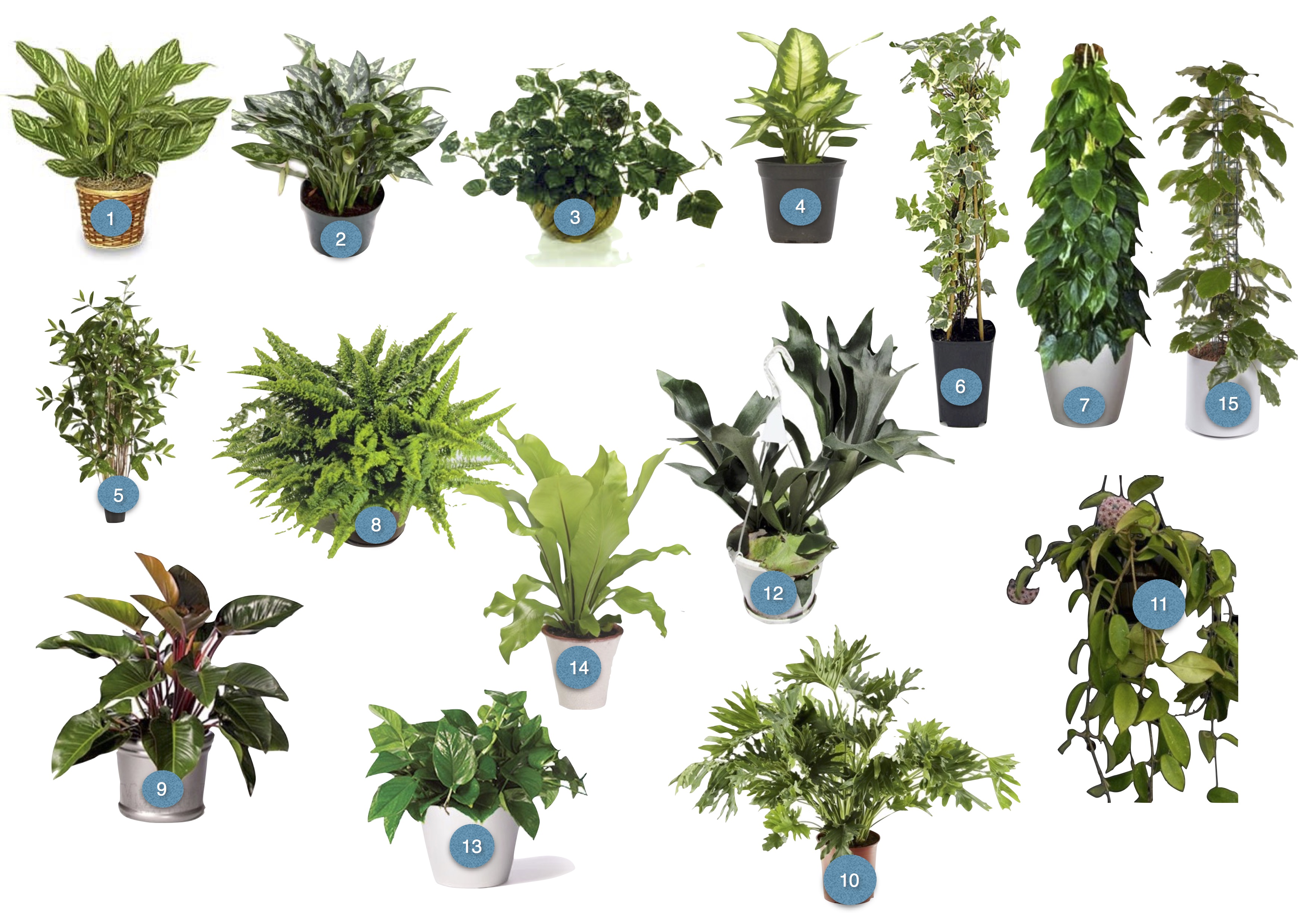
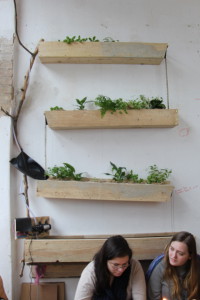
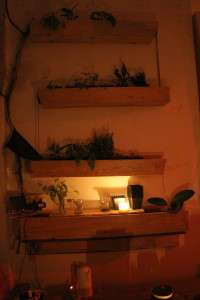
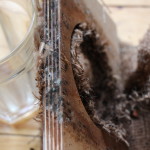
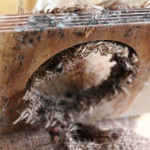
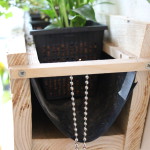
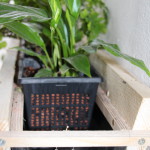
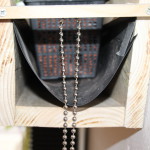
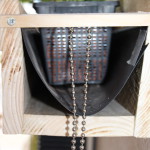
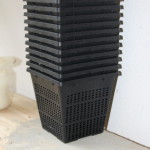
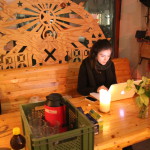
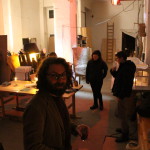
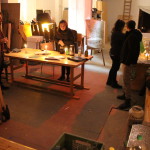
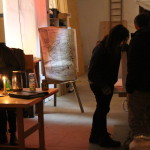
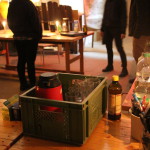
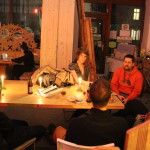
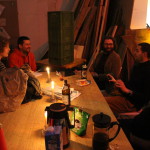
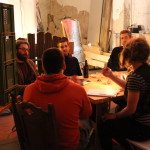
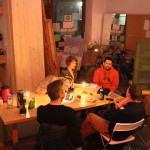
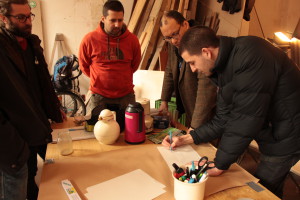
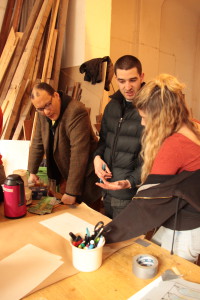
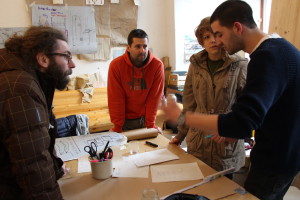
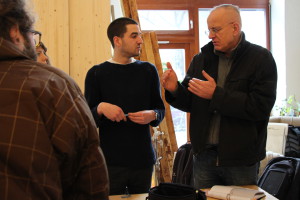
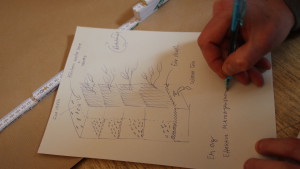
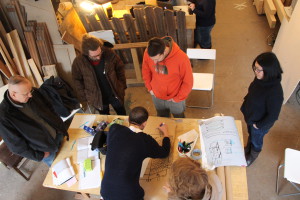
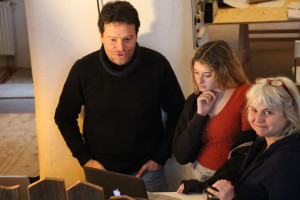
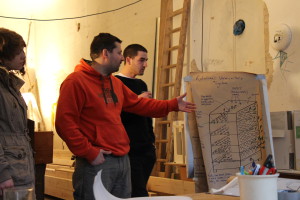
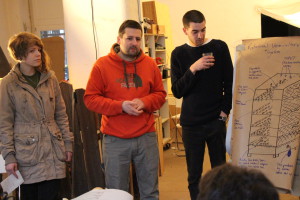
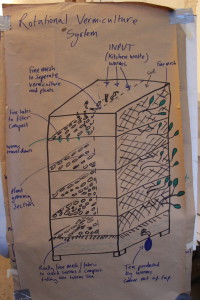
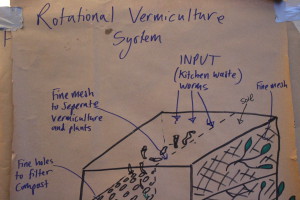
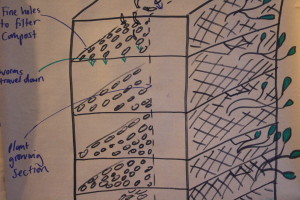
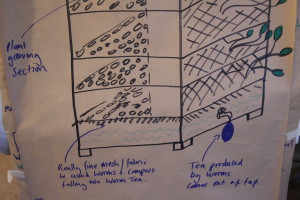
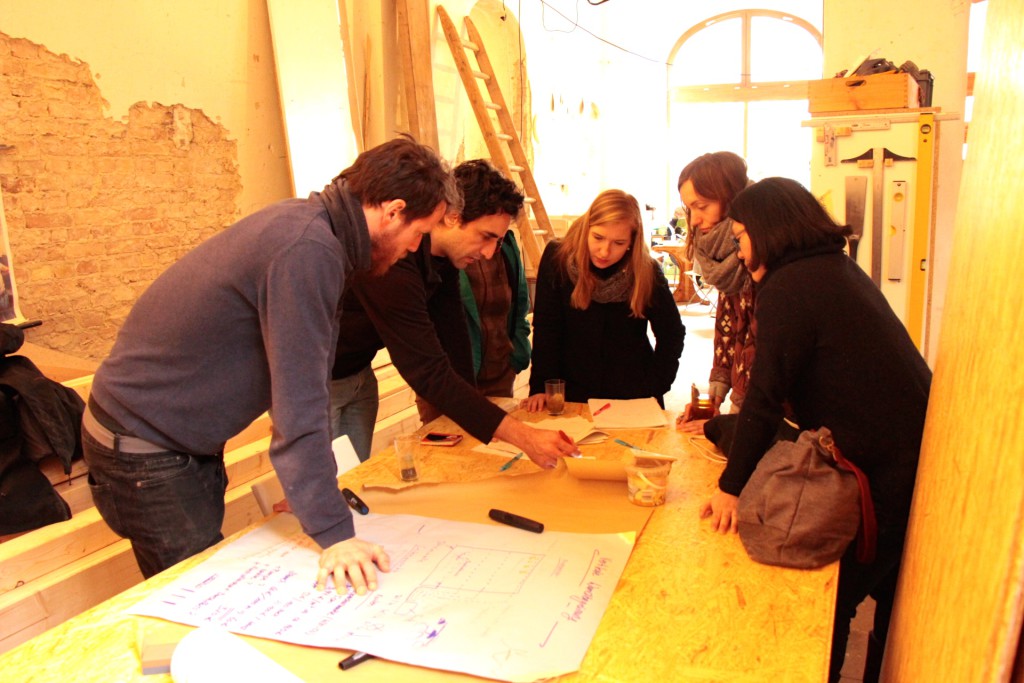
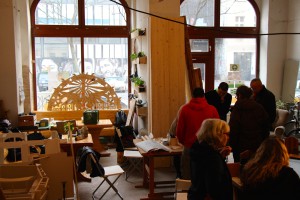
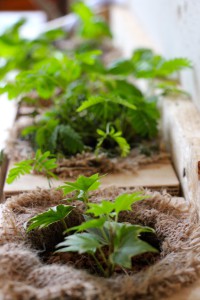
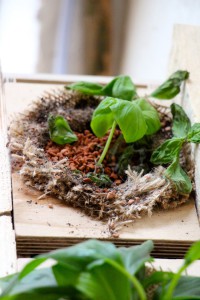
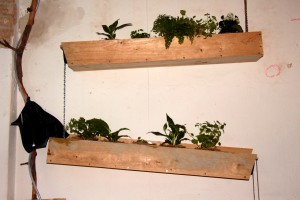
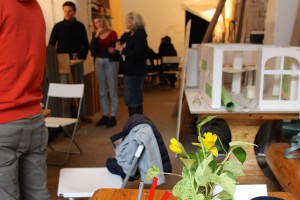
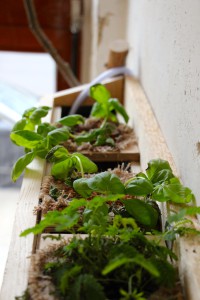
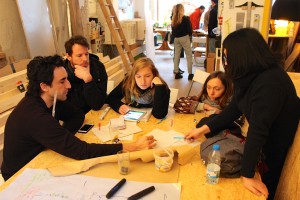
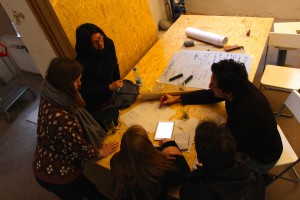
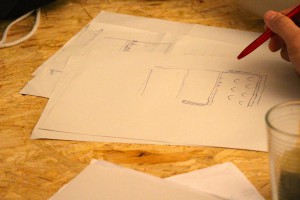
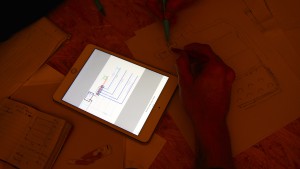
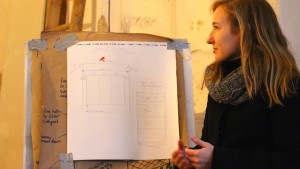
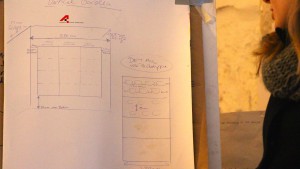
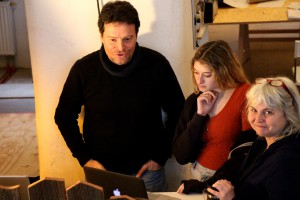
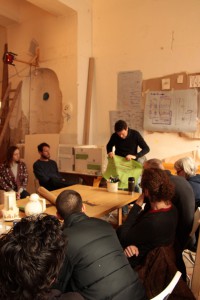
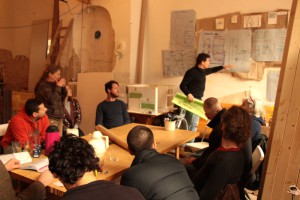
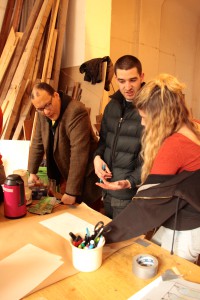
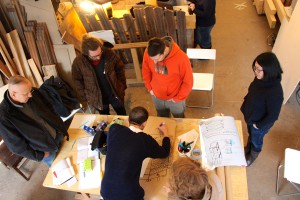
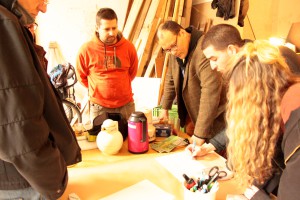
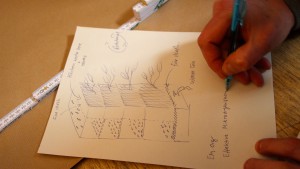
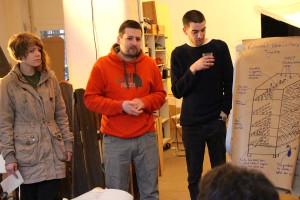
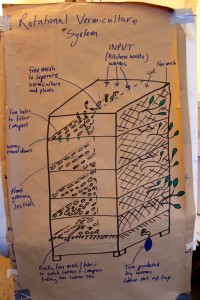
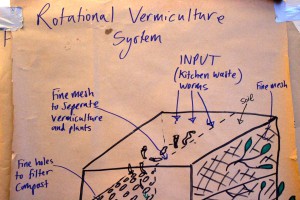
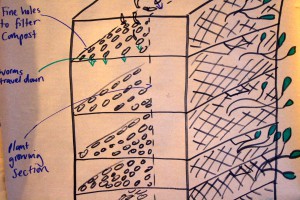
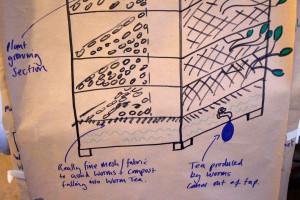
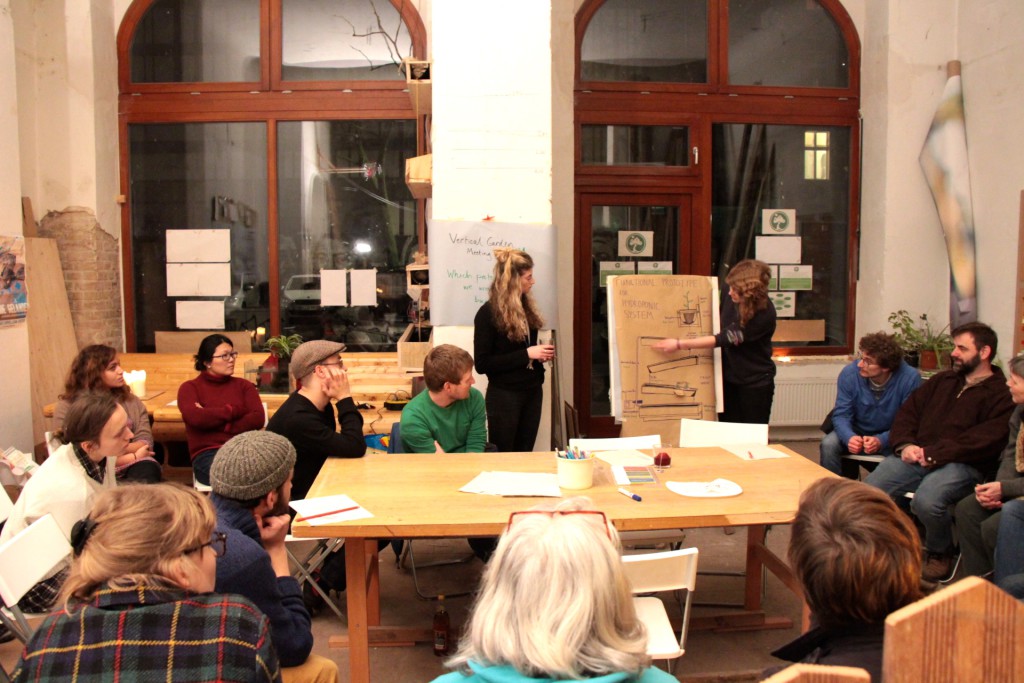
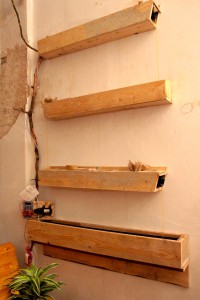
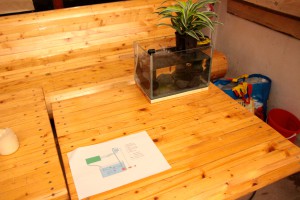
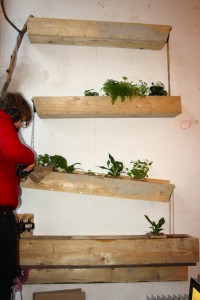
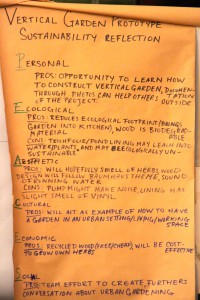
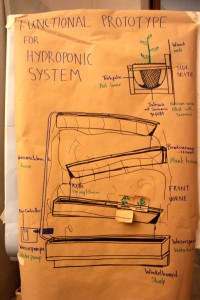
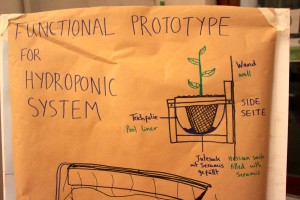
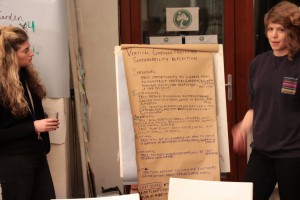
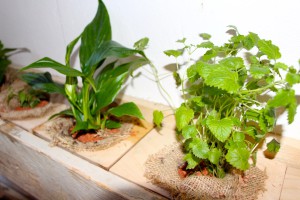
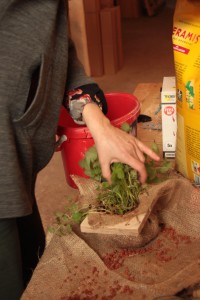
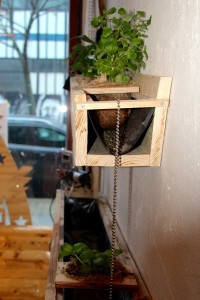
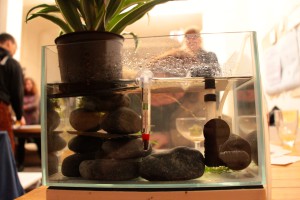
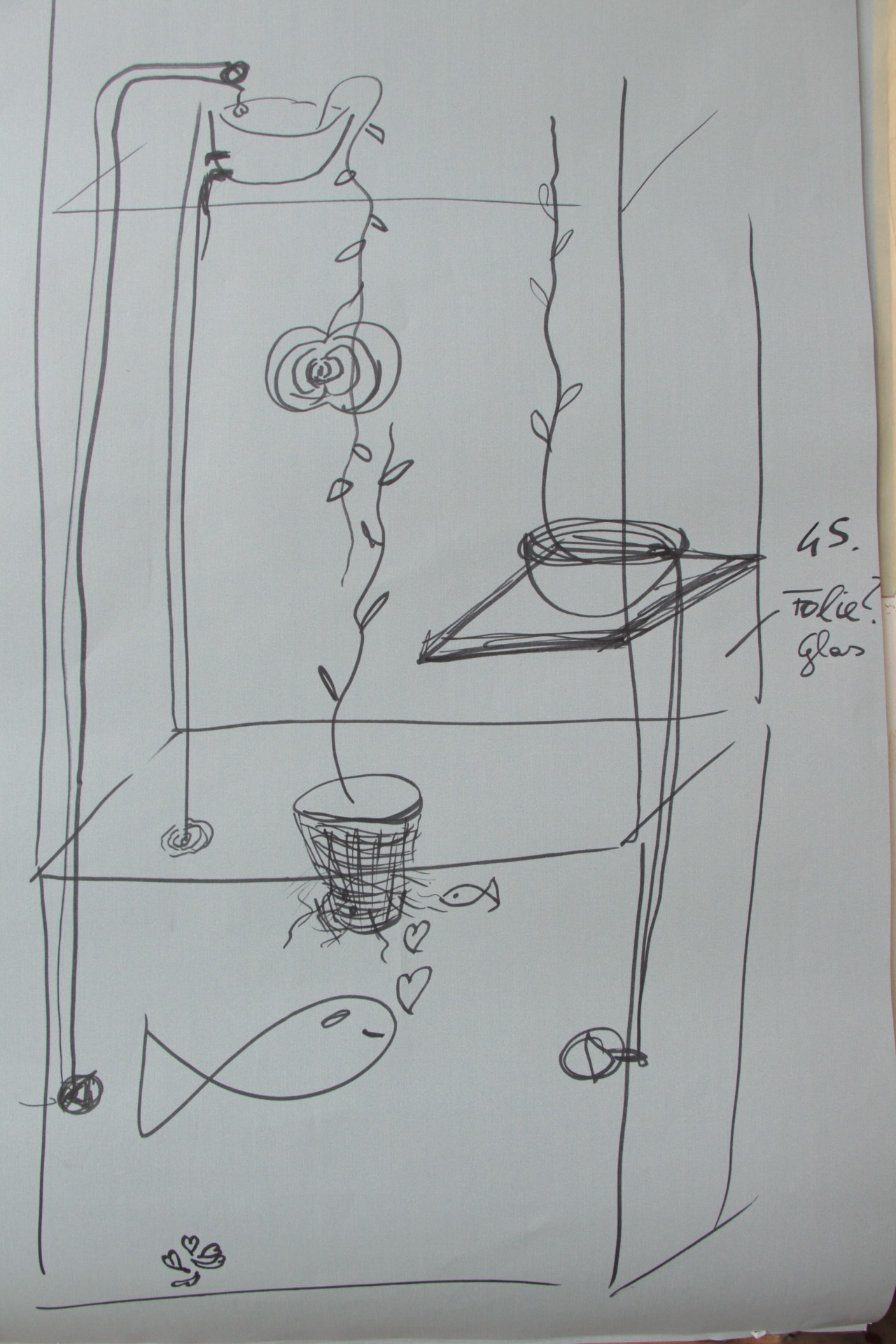
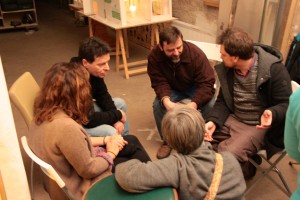
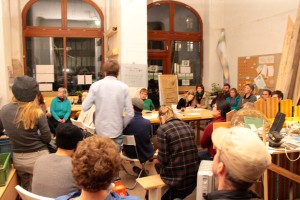
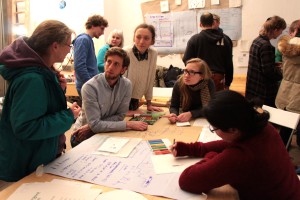
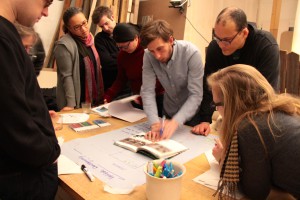

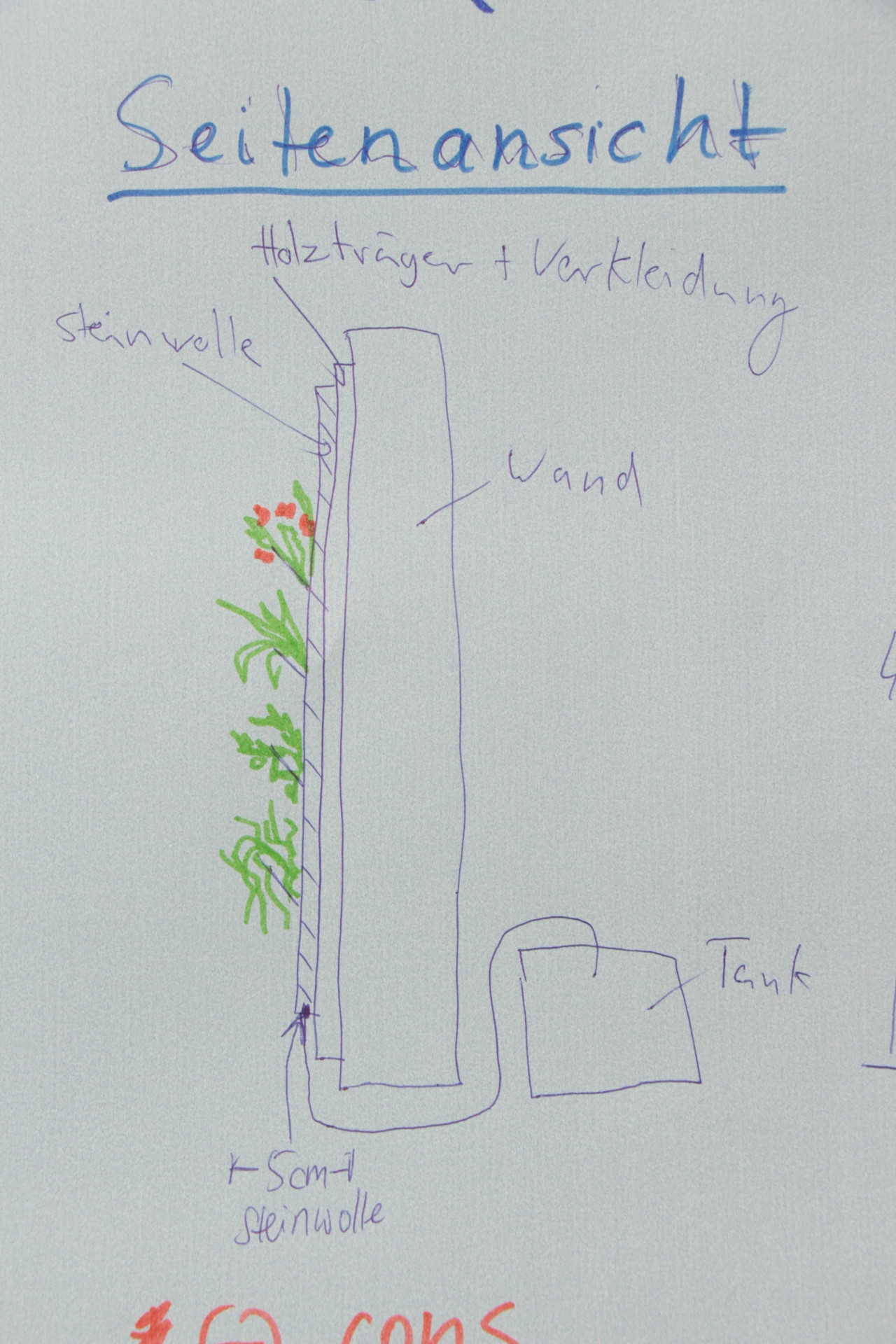
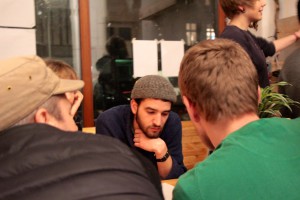
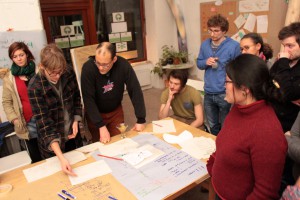

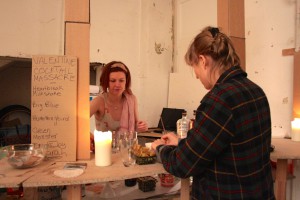
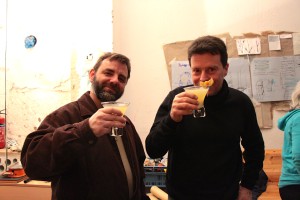
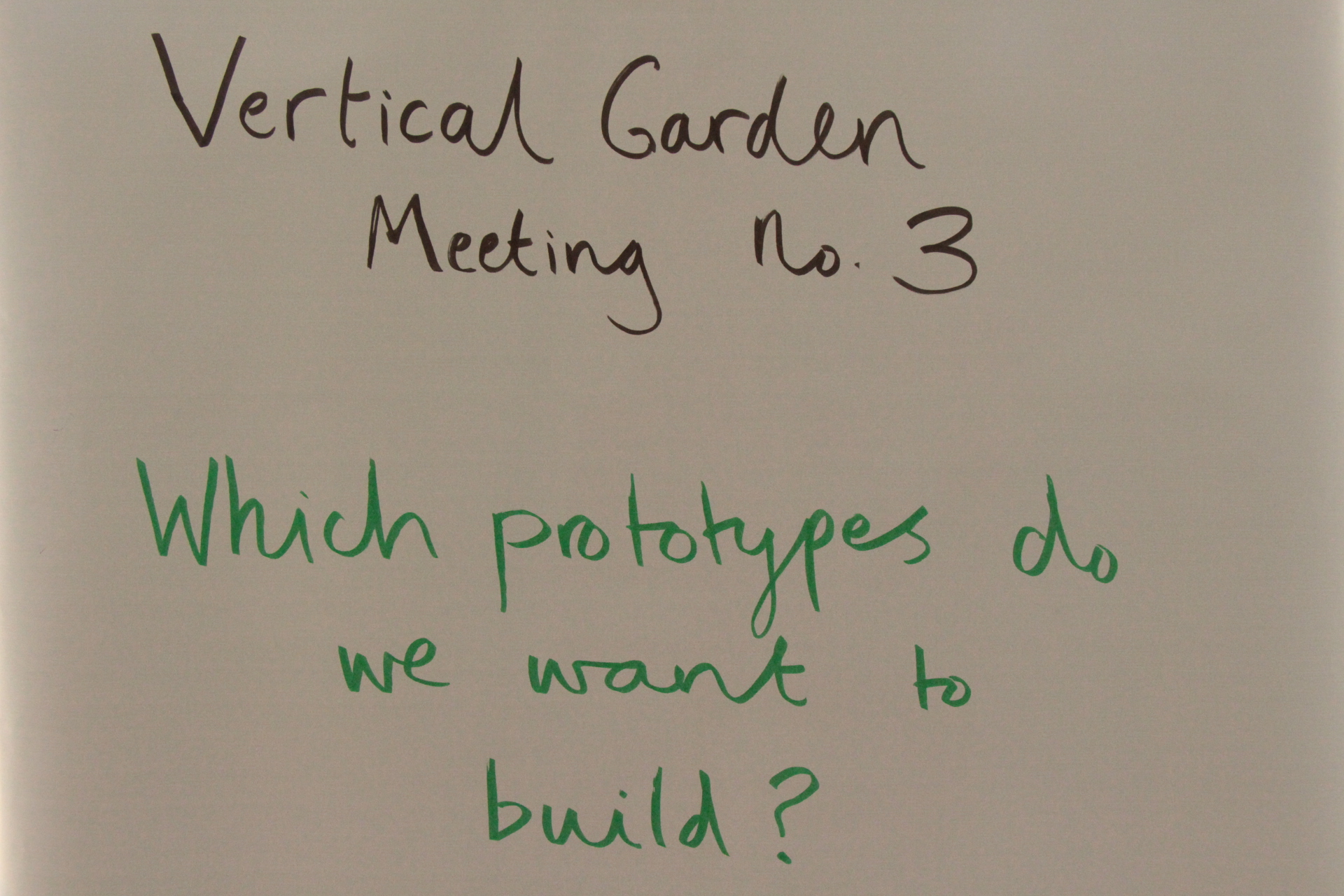
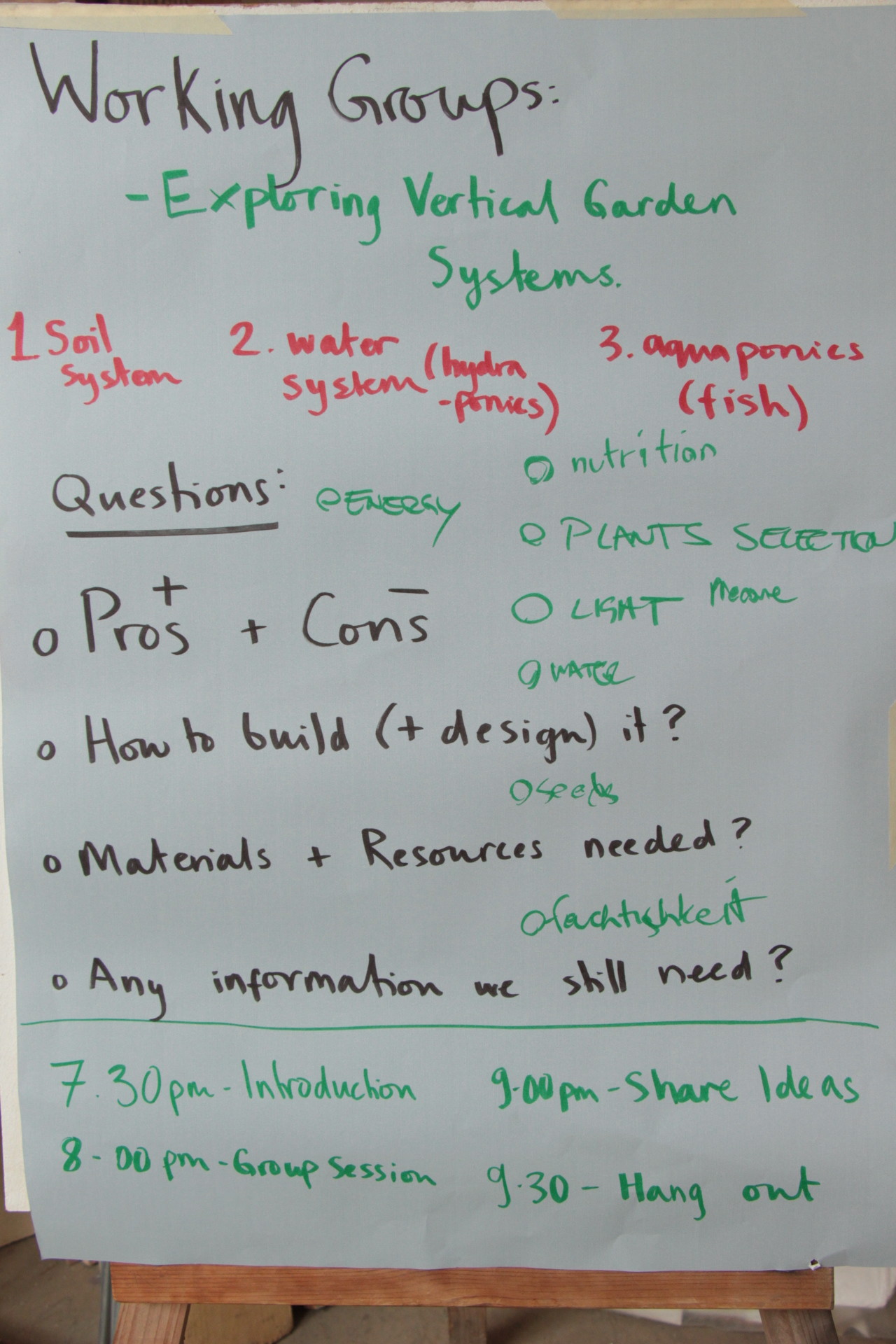













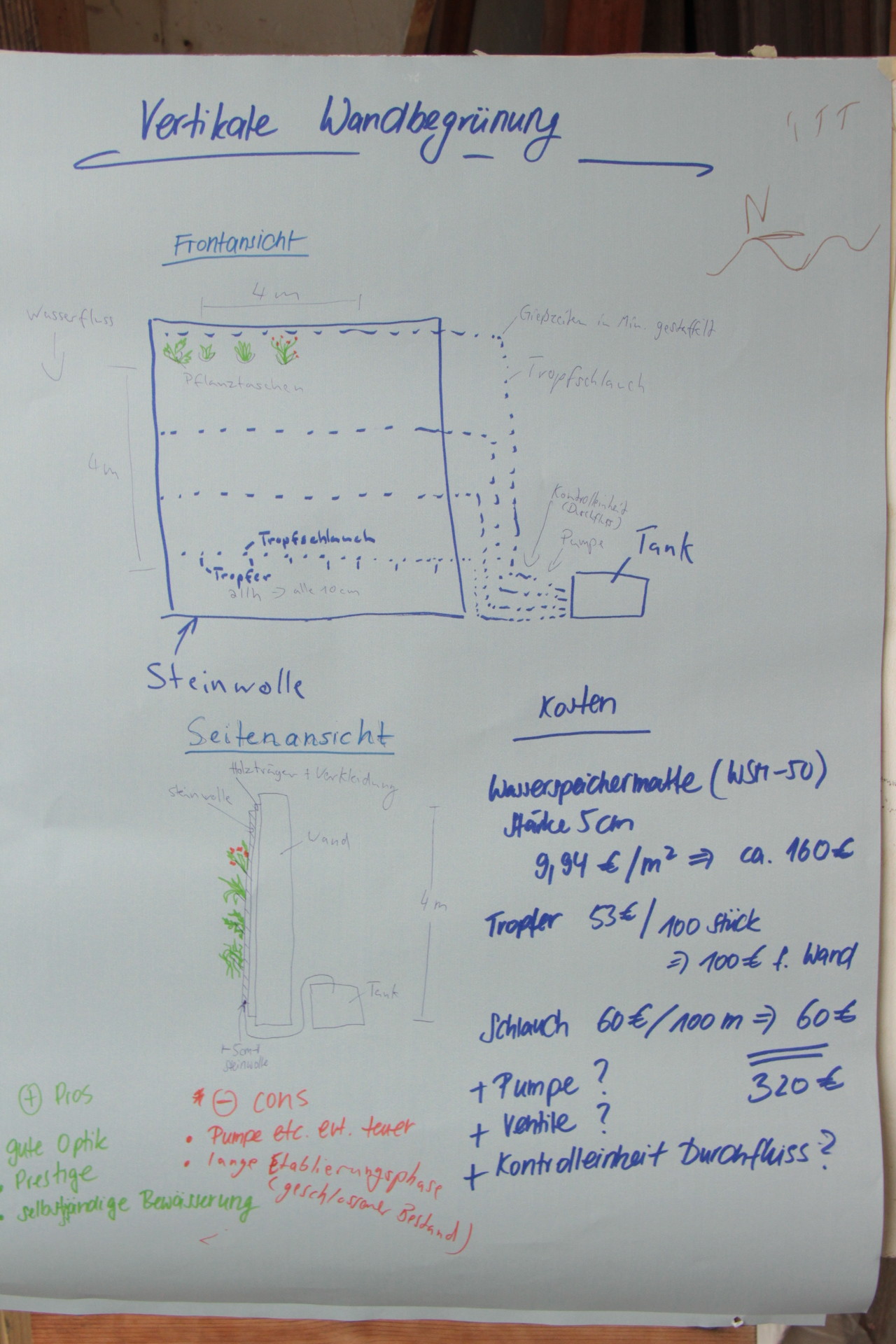
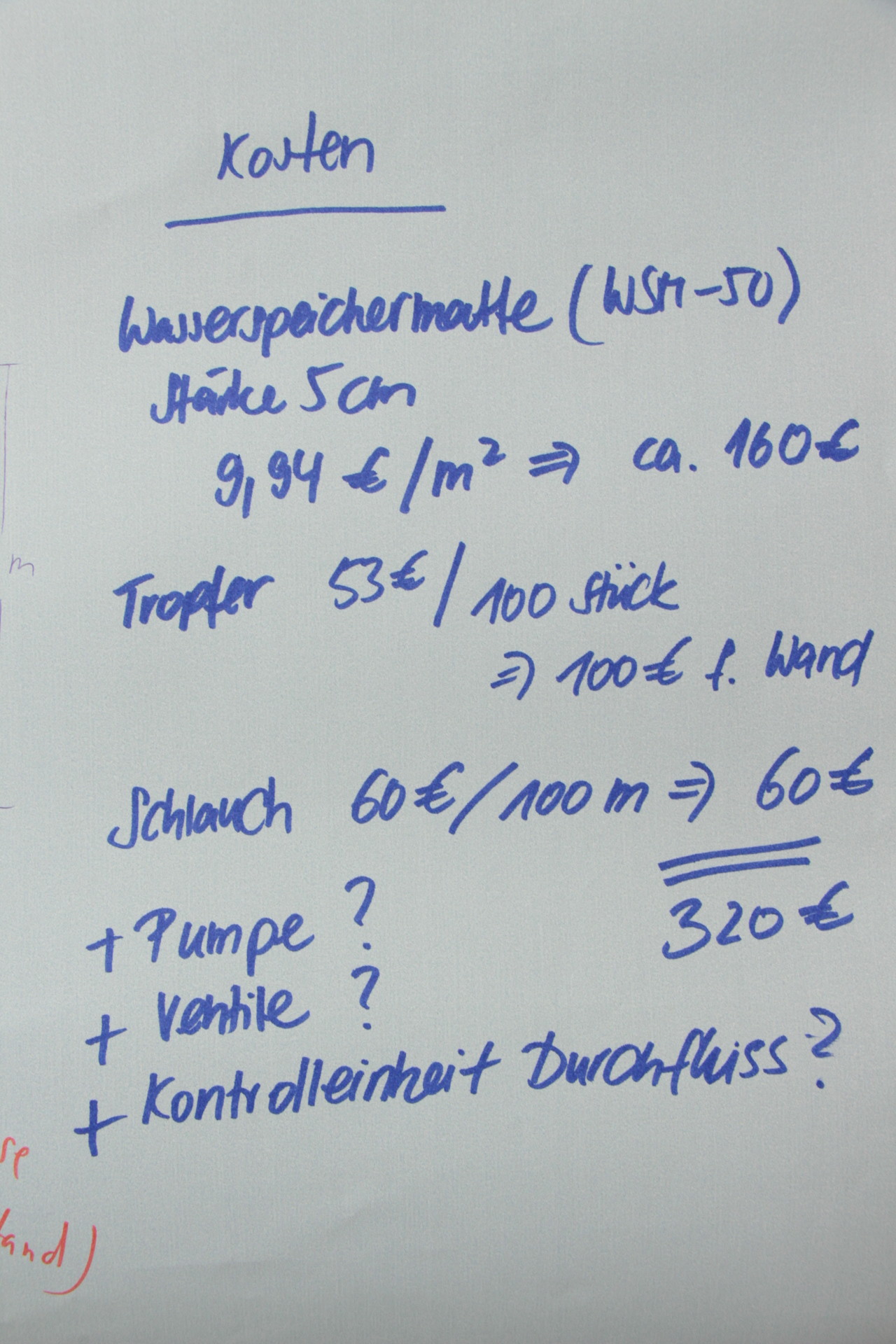






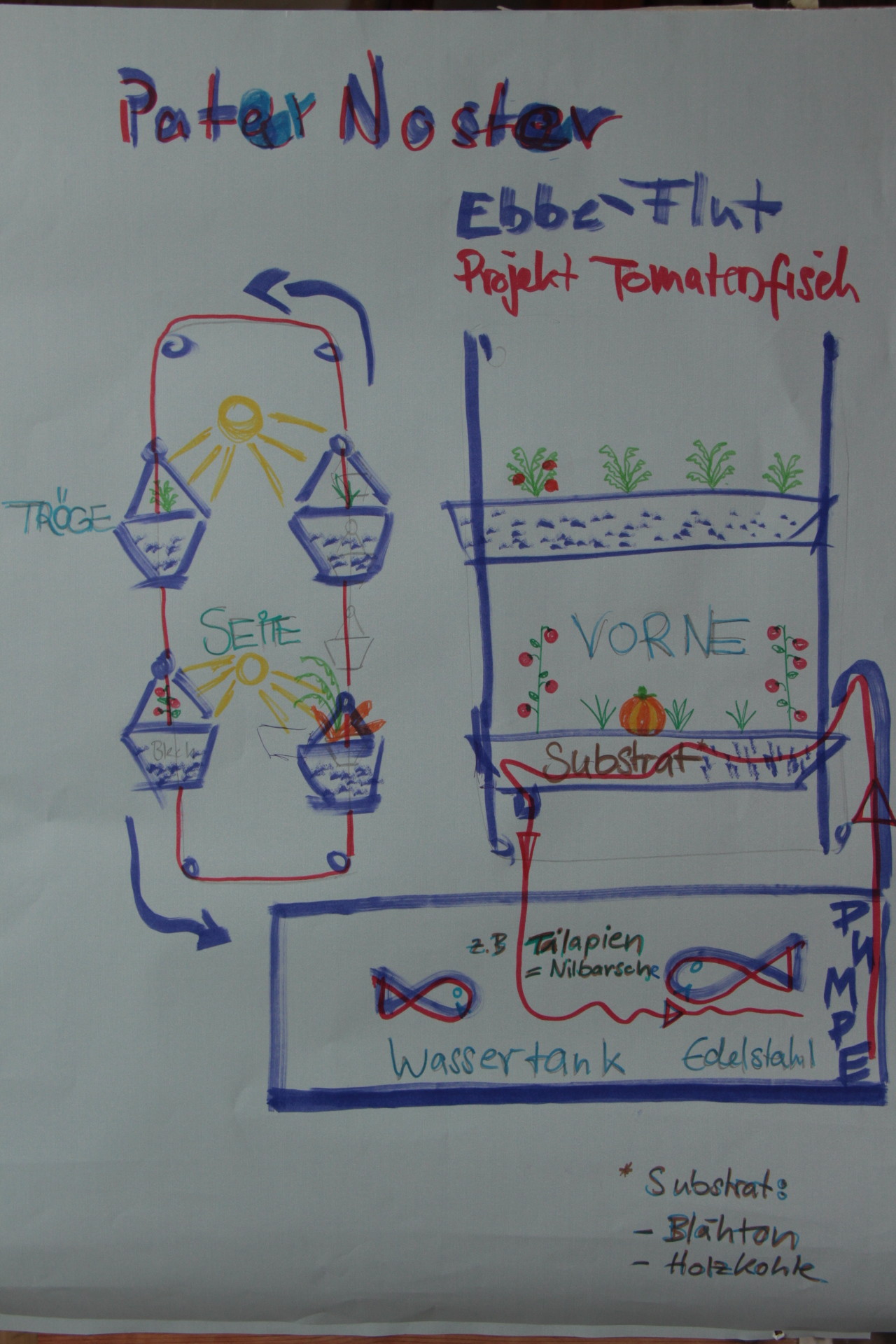


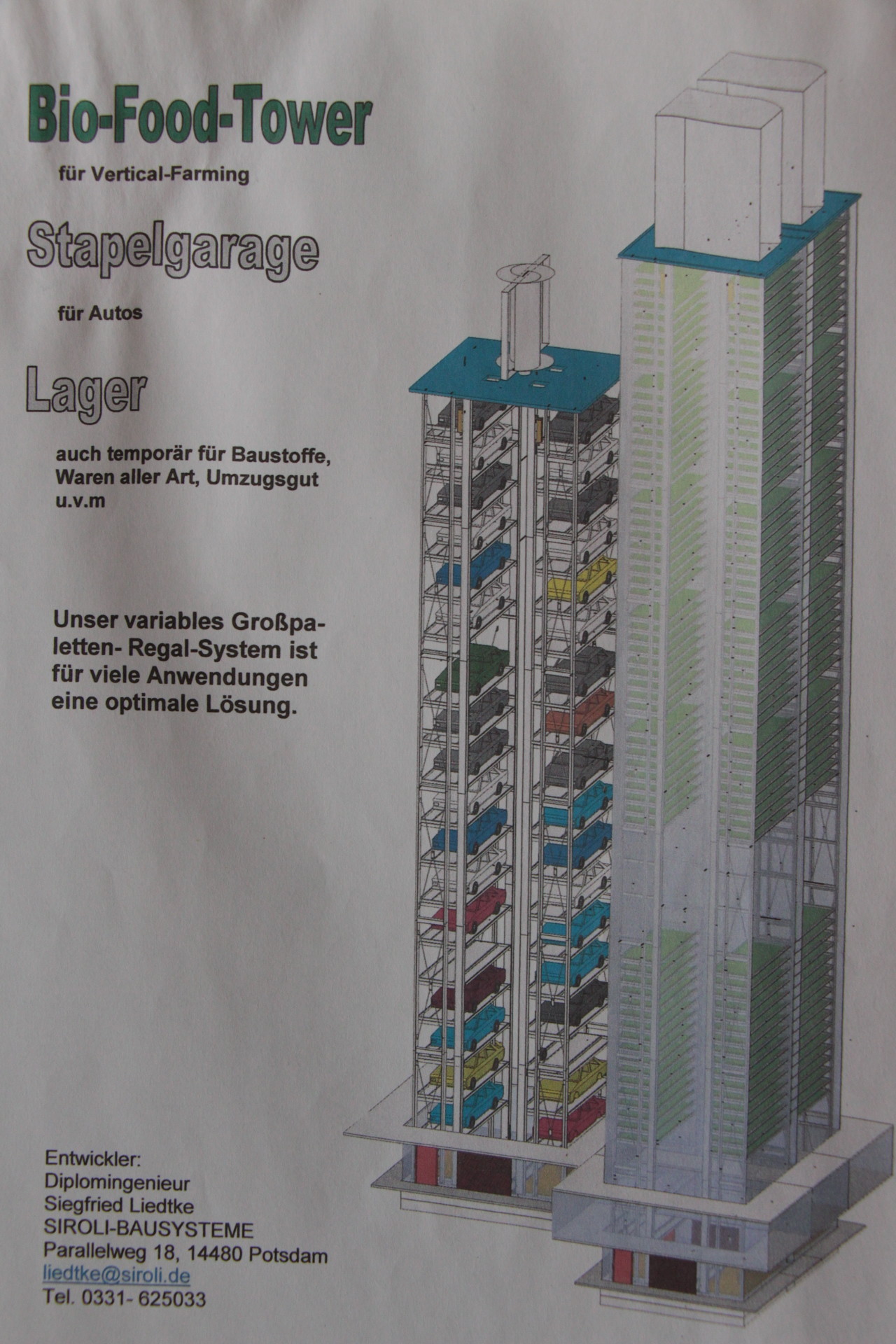
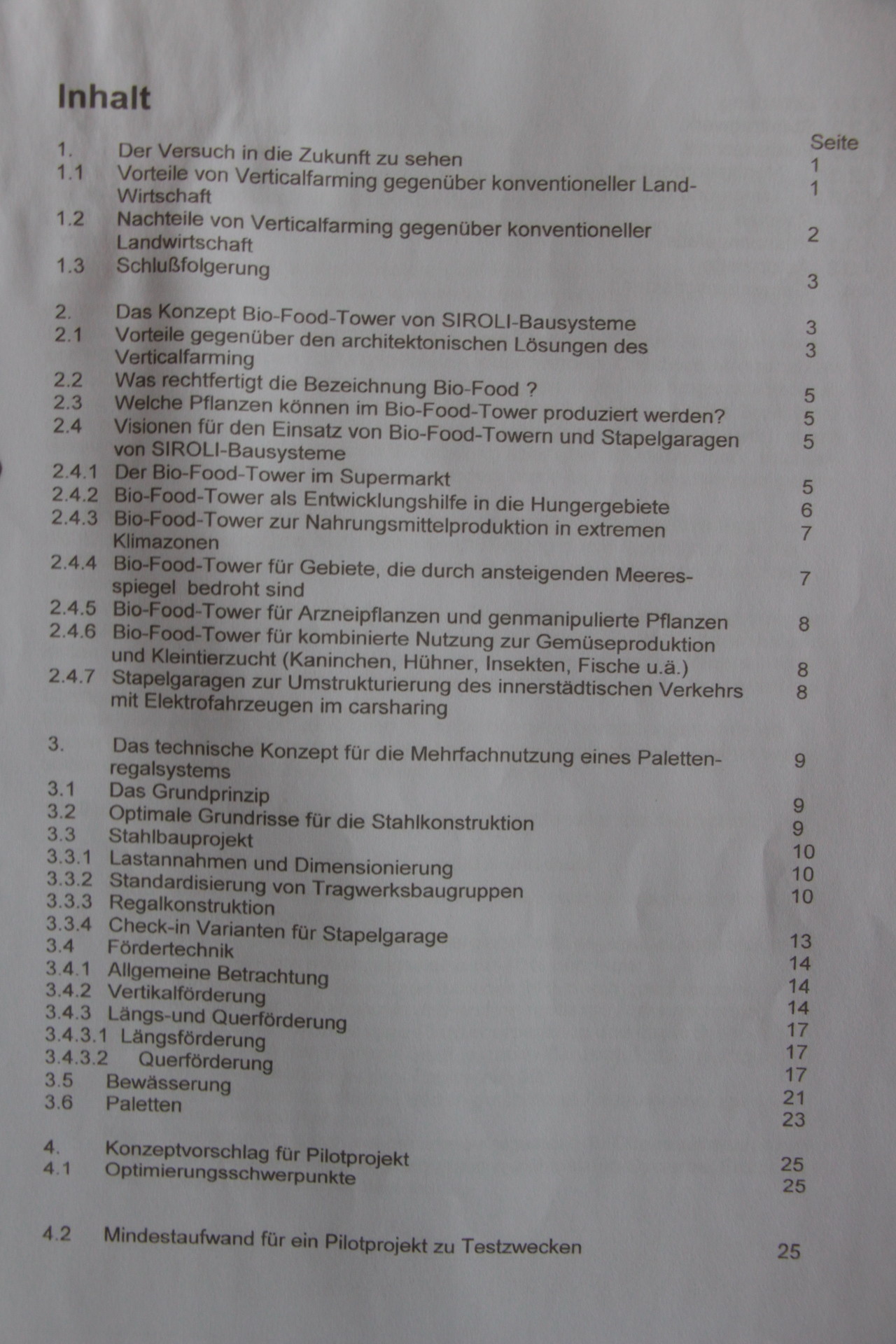
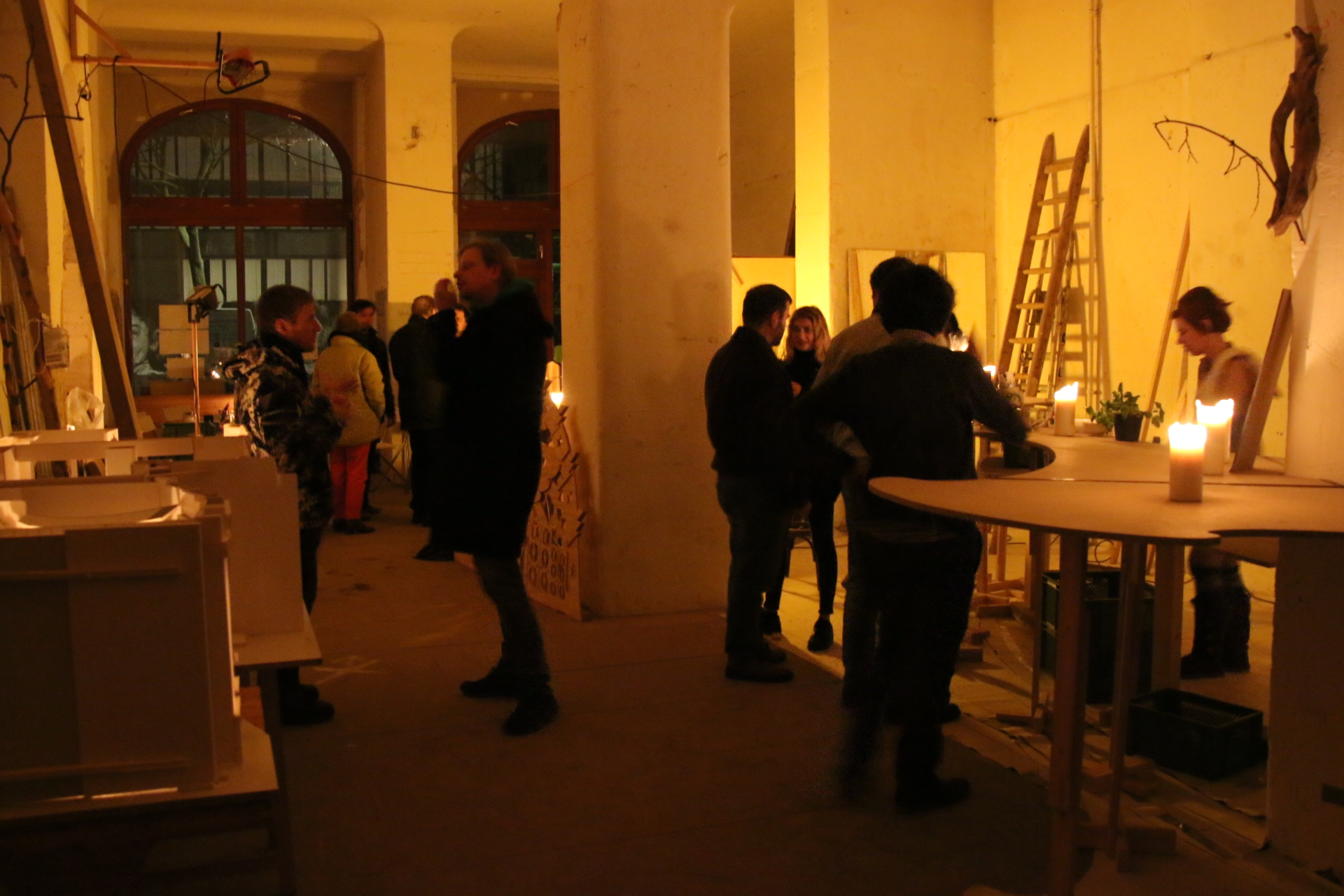






2 thoughts on “Permaculture Vertical Gardens”
Comments are closed.